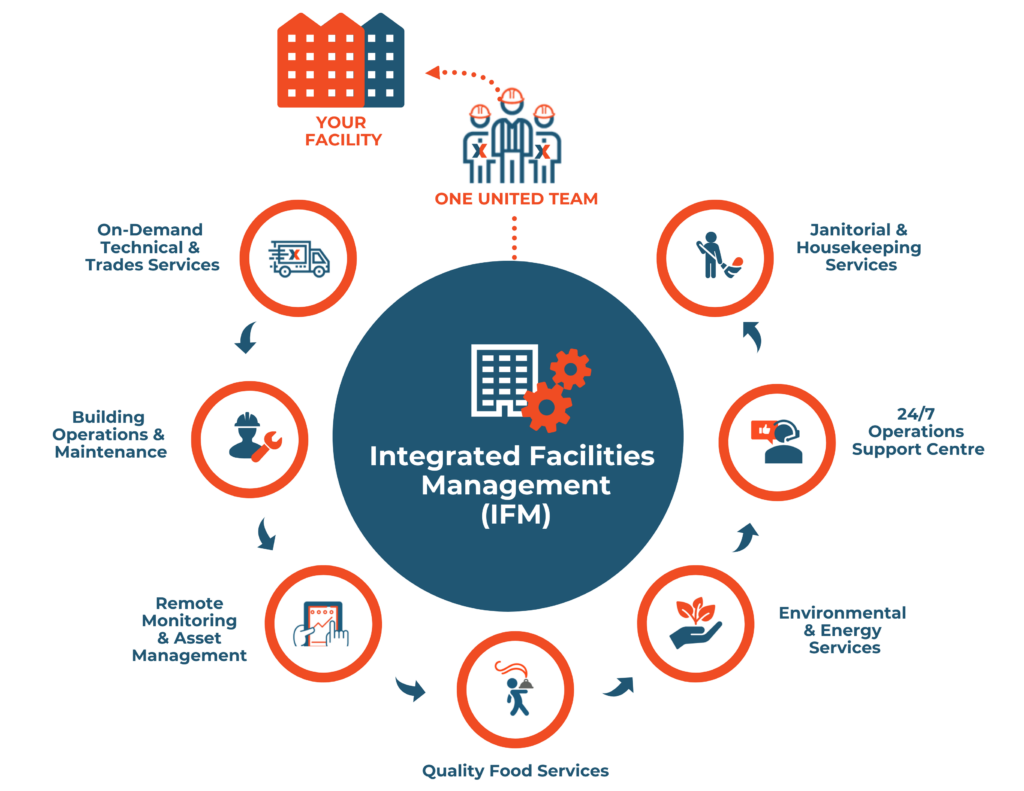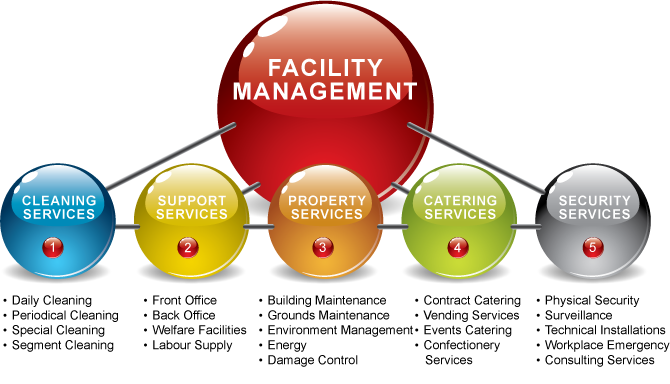Why Facility Management is Critical for Property Long Life
Wiki Article
The Important Guide to Facility Monitoring: Approaches for Success
Center monitoring plays a vital duty in the overall success of an organization, offering as the foundation that supports security, performance, and efficiency. The nuances of efficient center monitoring expand past plain logistics and require an extensive understanding of both measurable and qualitative metrics.Recognizing Facility Management
What constitutes effective facility management? Efficient center monitoring incorporates the control of numerous business features to make sure that constructed settings are secure, effective, and favorable to efficiency. It integrates the principles of organization, style, and design administration to produce a seamless operational circulation within a company.Key aspects of center monitoring include room preparation, maintenance administration, and conformity with health and wellness policies. Area planning concentrates on maximizing using physical resources to support business goals, while maintenance monitoring ensures that centers are maintained in optimal condition, making the most of life-span and minimizing functional costs. Compliance with lawful and governing requirements is vital, as it safeguards the organization versus potential obligations and boosts its reputation.
In addition, efficient facility monitoring counts on the calculated use technology, such as Building Management Equipment (BMS) and Computer-Aided Center Administration (CAFM) devices. These technologies help with real-time monitoring of building systems and streamline upkeep procedures (Facility Management). Eventually, an extensive method to facility monitoring not just advertises functional performance however also fosters a favorable atmosphere for workers and visitors alike, driving overall organizational success

Key Methods for Optimization
Optimizing facility monitoring requires a calculated strategy that straightens operational exercise with organizational objectives. To accomplish this, the initial key method is the execution of integrated technological services. Making use of advanced software application systems permits for real-time surveillance of facility operations, assisting in data-driven decision-making and boosting total efficiency.Secondly, regular evaluations of center performance are vital. Carrying out regular examinations and audits enables facility managers to identify areas that need improvement, guaranteeing that sources are allocated effectively. This proactive method assists in reducing downtime and improving service distribution.
An additional essential approach is cultivating cooperation across departments. By encouraging open interaction in between teams, facility managers can better straighten their strategies with business goals, leading to improved functional harmony. In addition, involving staff in training programs promotes a society of responsibility and improves their ability to add to optimization initiatives.
Enhancing Security Procedures
Strengthening safety methods is crucial for producing a safe environment within centers. A thorough safety and security method not just safeguards visitors and employees yet likewise enhances functional effectiveness. Facility Management. To achieve this, center supervisors need to carry out normal danger assessments to recognize prospective threats and make sure that appropriate procedures are in location
In addition, clear interaction networks need to be developed to report security worries immediately. This consists of developing an available platform for employees to click now voice potential threats or incidents without anxiety of retribution. Leveraging innovation can improve safety steps; for example, carrying out monitoring systems and accessibility controls helps keep an eye on facility activities and restrict unauthorized access.
Lastly, compliance with regional policies and market requirements is non-negotiable. Routine audits and evaluations of safety methods make sure alignment with existing laws and best methods. By prioritizing these approaches, facility supervisors can grow a society of security that protects all stakeholders and inevitably contributes to the company's success.
Improving Work Environment Atmosphere
A positive workplace setting dramatically improves staff member morale and performance, making it an important focus for facility monitoring. To produce such a setting, center supervisors ought to focus on several key aspects, consisting of functional designs, visual appeals, and staff member engagement.Ergonomic considerations are necessary to reduce physical stress and discomfort. This includes giving adjustable furniture, appropriate lights, company website and adequate area for activity. These adjustments can result in minimized absence and boosted work complete satisfaction.
Looks play a vital role in shaping the work environment ambience. Making use of color psychology, natural lighting, and greenery can promote a promoting and welcoming atmosphere. Attentively made rooms can enhance creativity and improve overall well-being.
Furthermore, motivating worker involvement through inclusive decision-making processes can enhance the sense of ownership and belonging. Collecting responses on office improvements and entailing staff members in the layout procedure can bring about a more customized atmosphere that satisfies their requirements.
Finally, advertising wellness efforts, such as wellness programs and relaxation rooms, can better add to a helpful work environment society. By concentrating on these strategies, facility managers can efficiently improve the office environment, driving both employee contentment and business success.
Measuring Success in Facilities
Gauging success in center administration requires a comprehensive strategy that examines both qualitative and quantitative metrics. Measurable metrics usually consist of essential performance indications (KPIs) such as area utilization prices, energy intake, maintenance prices, and occupancy degrees. These metrics supply a clear image of functional effectiveness and financial efficiency, allowing center managers to recognize areas for renovation and benchmark versus industry criteria.Qualitative metrics, on the other hand, concentrate on user fulfillment and employee involvement. Surveys and comments mechanisms can assess just how well the facilities fulfill the needs of passengers, helping to examine the total workplace setting. This aspect is critical, as a pleased labor force is often linked to raised productivity and retention rates.
To successfully measure success, facility supervisors need to also think about incorporating technology, such as developing monitoring systems and information analytics tools, to collect and examine pertinent information. Frequently assessing both collections of metrics permits a more balanced view of performance and notifies critical choices. Inevitably, a successful facility administration method rests on a dedication to continual renovation, ensuring that both operational effectiveness and individual fulfillment are focused on.

Final Thought
Finally, effective center administration is essential see this page for enhancing business performance. By carrying out integrated technical options, conducting normal analyses, and promoting cooperation across divisions, organizations can achieve ideal resource allotment and functional efficiency. Prioritizing safety protocols and enhancing office atmospheres even more add to raised staff member fulfillment. Finally, gauging success through both qualitative and quantitative metrics enables constant improvement, inevitably bring about reduced functional costs and a more efficient business environment.Center monitoring plays a crucial function in the general success of a company, offering as the foundation that sustains performance, performance, and security.Secret aspects of facility administration include area planning, maintenance management, and conformity with wellness and security guidelines.Moreover, efficient facility monitoring counts on the critical usage of innovation, such as Building Administration Systems (BMS) and Computer-Aided Facility Monitoring (CAFM) devices. Eventually, an extensive approach to center administration not only advertises functional effectiveness but additionally promotes a positive setting for visitors and staff members alike, driving general organizational success.
Inevitably, a successful center administration technique pivots on a commitment to continuous renovation, making sure that both operational performances and user contentment are focused on.
Report this wiki page